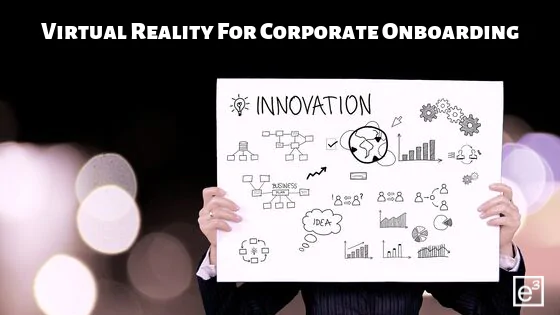In this series, we’ll be going through each type of immersive reality technology and observing its effect on training. Let’s pick up where we left off and talk about Virtual Reality Training For Corporate On-Boarding.
Let’s recap, immersive reality is the presentation of an artificial environment, partially or entirely, that replaces a users’ real-world surroundings convincingly enough that they are able to suspend disbelief. This technology is known to us in the form of Virtual Reality (VR), Augmented Reality (AR), and Mixed Reality (MR).
Using Virtual Reality For Corporate On-Boarding.
VR is a three-dimensional, computer-generated representation of physical worlds. These worlds are immersive, and users can interact with them as if they are real. Instead of sending trainers to conduct new-hire training, you can save money by using VR. Since the cost of VR tech has come down so sharply in recent years, some companies are now opting to send pre-loaded VR headsets with training videos to field offices to reduce expenses.
Make Your Virtual Reality as Interactive as Possible.
The more workers feel that they are interacting with a live environment, the more impactful the experience. Scenarios can be custom developed by creating specific settings and tasks, adding narration and allowing users to dictate their path in a non-linear fashion as they explore the virtual environment. Consider adding elements such as voice-over or hot spot overlays to make the experience more immersive and memorable.
Measuring the Effectiveness of Your Virtual Reality Training Programs.
One way to evaluate VR training effectiveness is to administer a skills assessment following a VR session. For example, a hospital provided VR training to help its employees master the skill of IV insertion. They used post-training assessments to demonstrate that their skills were enhanced significantly after one training session. You can also ask your employees to provide feedback about what works and what needs improvement following VR training. Integrating this input into your VR training process with greatly improve future training efforts and design.
Immersive Reality Training
Immersive realities offer a cost-effective tool to study or train, replicating actions and interactions in a controlled environment. They can simulate real workspaces and provide learners with a virtual environment where they can develop their skills without the real-world consequences of failing. Virtual training offers a method to increase retention and recall by allowing users to experience and navigate the exact conditions they would in real life. Supplementing traditional training with virtual training environments offers avenues of realism while minimizing cost and mitigating risk.
Virtual training appeals to the senses, making it easier to remember things because the user has dealt with multiple senses during the experience. This cost-cutting technology provides better results but the challenge is in the development of the content. eCubed Training provides custom development of VR, AR, and MR training experiences for industrial professions. Contact us now for a free consultation!

